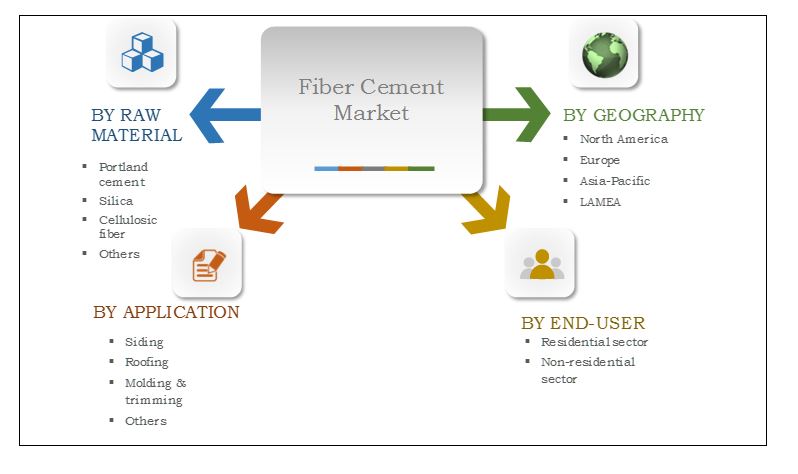Fibre cement market
The growth in the fibre cement market is a result of a boom in the construction industry, a ban on asbestos cement products, the high efficiency of fibre cement products, and rapid urbanisation and industrialisation in developing countries. In addition, the increase in infrastructure investments has created an opportunity for the global market. However, a dearth of skilled labour in developing countries is expected to hamper the fibre cement market growth.
Fibre cement products have gained popularity in North America and the Asia-Pacific region in recent years. Homeowners can prefer fibre cement siding compared to vinyl siding because of its durability, resistance to termites and water, fire retardant properties, and low maintenance.
This growing interest of consumers in fibre cement boards, sheets, slates, and other products, has created lucrative opportunities for manufacturers to offer a broad array of products. The global fibre cement market generated revenue of $12,336 million in 2014, and is expected to reach $18,888 million by 2022, registering a CAGR of 5.8% from 2016 to 2022.
The global fibre cement market generated revenue of $12,336 million in 2014, and is expected to reach $18,888 million by 2022, registering a CAGR of 5.8% from 2016 to 2022.
The key players in the market include; Etex Group NV, James Hardie Industries PLC, Evonik Industries AG, Compagnie De Saint Gobain SA, Toray Industries Inc., CSR Limited, The Siam Cement Public Company Limited, Nichiha Corporation, Plycem Corporation, and Cembrit Holding A/S.
The other companies operating in the fiber cement industry include Elementia, S.A.B de C.V., Marley Eternit Ltd., Thai Olympic Fibre-cement Co., Ltd., Mahaphant Fibre Cement Co., Ltd., Everest Industries Ltd., Swisspearl, Equitone, Allura USA, Beijing Hocreboard Building Materials Co., Ltd., and Fry Reglet.
Fibre cement market key segmentation by raw material:
- Portland cement.
- Silica.
- Cellulosic fibre.
- Others.
Fibre cement market key segmentation by application:
[edit] Find out more
[edit] Related articles on Designing Buildings Wiki
Featured articles and news
Homes England supports Greencore Homes
42 new build affordable sustainable homes in Oxfordshire.
Zero carbon social housing: unlocking brownfield potential
Seven ZEDpod strategies for brownfield housing success.
CIOB report; a blueprint for SDGs and the built environment
Pairing the Sustainable Development Goals with projects.
Types, tests, standards and fires relating to external cladding
Brief descriptions with an extensive list of fires for review.
Latest Build UK Building Safety Regime explainer published
Key elements in one short, now updated document.
UKGBC launch the UK Climate Resilience Roadmap
First guidance of its kind on direct climate impacts for the built environment and how it can adapt.
CLC Health, Safety and Wellbeing Strategy 2025
Launched by the Minister for Industry to look at fatalities on site, improving mental health and other issues.
One of the most impressive Victorian architects. Book review.
Common Assessment Standard now with building safety
New CAS update now includes mandatory building safety questions.
RTPI leader to become new CIOB Chief Executive Officer
Dr Victoria Hills MRTPI, FICE to take over after Caroline Gumble’s departure.
Social and affordable housing, a long term plan for delivery
The “Delivering a Decade of Renewal for Social and Affordable Housing” strategy sets out future path.
A change to adoptive architecture
Effects of global weather warming on architectural detailing, material choice and human interaction.
The proposed publicly owned and backed subsidiary of Homes England, to facilitate new homes.
How big is the problem and what can we do to mitigate the effects?
Overheating guidance and tools for building designers
A number of cool guides to help with the heat.
The UK's Modern Industrial Strategy: A 10 year plan
Previous consultation criticism, current key elements and general support with some persisting reservations.
Building Safety Regulator reforms
New roles, new staff and a new fast track service pave the way for a single construction regulator.






















